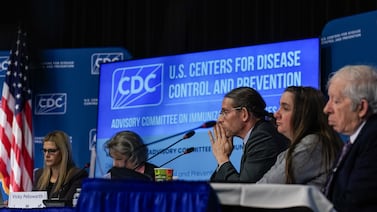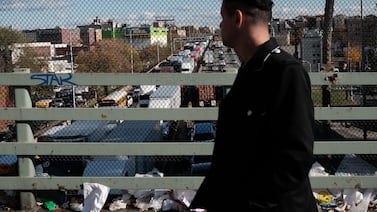Public health, explained: Sign up to receive Healthbeat’s free New York City newsletter here.
The New York City Department of Health and Mental Hygiene recently identified an alarming pattern: Overdose is the city’s leading driver of pregnancy-associated death. A new measure poised to be introduced in the New York City Council on Wednesday aims to reverse that trend.
Overdoses accounted for 20 of the city’s 58 total pregnancy-associated deaths — deaths due to any cause during pregnancy or within a year from the end of pregnancy — in 2021, the most recent data available. That year, overdoses accounted for 34.5% of the city’s pregnancy-associated deaths, compared to 14.1% for the total five-year period from 2016 to 2020.
“This is something that the city can invest in. We can prevent this,” said Council Member Jennifer Gutiérrez, a Democrat representing parts of Brooklyn and Queens, and the bill’s prime sponsor.
For the City Council, reducing maternal mortality — which disproportionately impacts Black New Yorkers — has been a priority in recent years. Gutiérrez’s measure would narrow in on the intersection of maternal mortality and the opioid crisis, requiring the Health Department to create an educational campaign for health care providers, developed by medical professional organizations, about how to treat opioid use disorder during and after pregnancy. The bill would also expand the availability of naloxone, a medication that reverses opioid overdose, at neighborhood health centers.
Dr. Leah Habersham, a physician-scientist at Mount Sinai, works with the patient population at the center of this issue: pregnant people with substance use disorders. Overdose-related deaths during or after pregnancy are preventable, she said, and increasing awareness of this issue is critical — for health care providers, patients’ family members, and the broader public.
“We need to destigmatize this medical condition and get people to realize that this is a medical problem that is treatable,” said Habersham, who is also a member of the city’s Maternal Mortality and Morbidity Review Committee, which reviews pregnancy-related deaths.
Habersham directs the Bridge Program, a Mount Sinai initiative launched in 2022, that offers patients a unique combination of prenatal care and substance abuse treatment. By prescribing medications for opioid use disorders, like methadone, she helps patients avoid withdrawal, which can make the pregnant person and their baby ill, or heighten the risk of preterm labor and delivery.
The patients that Habersham works with tend to be overlooked and ostracized, she said. Distrust of medical providers or fears around disclosing drug use can keep pregnant people from seeking help, and the consequences can be deadly, with a heightened risk of overdose seven to 12 months after delivery.
“If they find out about my program, many of them are oftentimes relieved to find out that there’s this doctor who actually will help them,” said Habersham, an assistant professor of psychiatry and assistant professor of obstetrics, gynecology, and reproductive science at the Icahn School of Medicine at Mount Sinai.
In its alert last year, the Health Department described medications for opioid use disorder as “lifesaving” and encouraged health care providers to initiate discussions with patients about the treatment as soon as possible. The alert also noted that postpartum people should be encouraged to breastfeed, given its associations with reductions in neonatal abstinence syndrome.
The 20 pregnancy-associated deaths related to overdoses reported in 2021 reflected a sharp increase from the nine deaths reported in 2020 — as well as from the 34 pregnancy-associated overdose deaths that were reported out of a total of 241 pregnancy-associated deaths from 2016 to 2020. The Health Department pointed to heightened isolation during the pandemic and a fentanyl-laced drug supply as drivers of the increased mortality.
Gutiérrez hopes that with a robust educational campaign around overdose and pregnancy, the city could make progress in its efforts to reduce these deaths — as well as the “ultimate goal of reversing Black maternal morbidity.”
Her measure would require the educational campaign to be developed with medical professional organizations and local health agencies, and focus on the benefits of using medications for opioid use disorder, as well as the dangers of withdrawal during pregnancy.
Habersham says that part of what makes her work meaningful is that pregnancy is often a catalyst for a patient to try to stop using substances — for their own health and their baby’s.
“It’s the one time that they’re really, really motivated to get help, even if it’s initially not for themselves,” she said. “Oftentimes, it does become for themselves, because they know they have to get better in order to be a better parent.”
Eliza Fawcett is a reporter covering public health in New York City for Healthbeat. Contact Eliza at efawcett@healthbeat.org .






